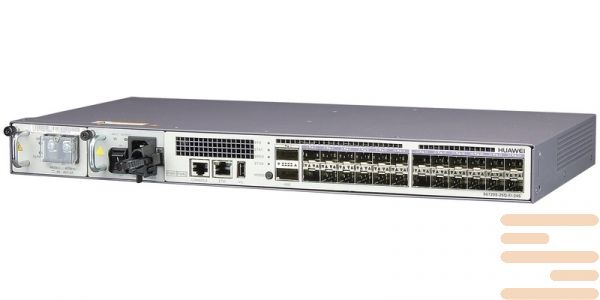Switch Huawei S6720S-26Q-EI-24S-AC
11500 $
Switches Huawei Series S6720 10GE are designed to provide internet data centers and large data centers with highly available, scalable server access at 10 Gbit/with. High transfer speed Lkand packages (up to 1080 Mpps), total switching capacity 2,56 Tbit/c and optional 4-port NIC configuration 40 GE (QSFP+) guarantee high device flexibility S6720-EI. Ideal as core switches or aggregation switches in campus networks of large organizations to support server applications that require high bandwidth.
To ensure reliable and safe operation, a 1 + 1 DC and AC power module redundancy scheme is implemented, and QoS mechanisms are also applied. QoS. Additional flexibility is provided through the use of ports QSFP+ 40 Gbit/with stacking technology for long distance transmission.
Specifications switch Huawei S6720S-26Q-EI-24S-AC:
|
Item |
S6720S-26Q-EI-24S-AC |
|
Fixed Ports |
24 x 10 GE SFP+, 2 x 40 GE QSFP+ ports |
|
Extended Slot |
Not supported |
|
MAC Address Table |
288K MAC address entries |
|
VLAN |
4K VLANs |
|
IPv4 Routing |
Static routing, RIPv1, RIPv2, ECMP, and URPF |
|
IPv6 Routing |
Static route |
|
IPv6 Features |
Neighbor Discovery (ND) |
|
Multicast |
Static Layer 2 multicast MAC address |
|
QoS/ACL |
Rate limiting on packets sent and received by an interface |
|
MPLS |
MPLS, MPLS VLL, L3VPN |
|
VPLS |
Martini VPLS |
|
Reliability |
TP (IEEE 802.1d), RSTP (IEEE 802.1w), and MSTP (IEEE 802.1s) |
|
Security |
User privilege management and password protection |
|
Super Virtual Fabric (SVF) |
Working as the parent node to vertically virtualize downlink switches as one device for management, supports two-layer clients architecture |
|
VXLAN |
Supports the VxLAN function, supports VxLAN L2 and L3 gateways |
|
Management and Maintenance |
iStack (using service ports as stack ports) |
|
Operating Environment |
Operating temperature: 0m to 1,800m: 0°C to 45°C; 1,800m to 5,000m: 1°C decrease for every 220m increase in altitude |
|
Input Voltage |
AC: |
|
Dimensions (W x D x H) |
442 mm x 220 mm x 44.4 mm |
|
Typical Power Consumption |
AC: |
| condition | new |
|---|

Log In